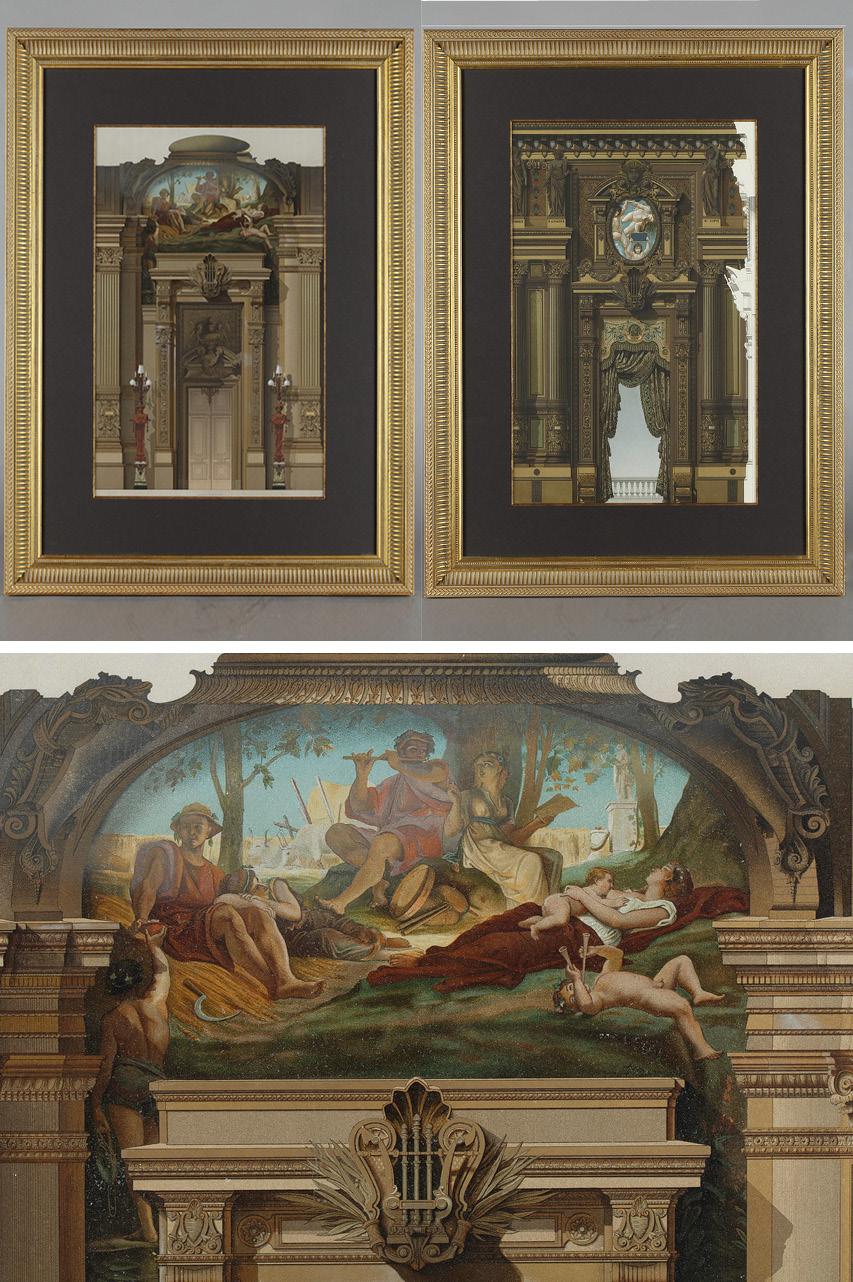The different engraving and printing techniques
30.07.23
Engraving and printing techniques are artistic methods used to reproduce an image on various surfaces. Engraving involves incising a surface to create a raised or recessed image, while printing uses inks to transfer a previously engraved image onto a flat surface. Before discussing engraving techniques, it's important to note that the terms "print" and "engraving" are inseparable.
The term "print," from the Italian "stampa" (press), refers to any print made with ink on a flexible support from a matrix that is engraved or drawn upon. Three processes are distinguished: relief, intaglio, or planographic.
Wood engraving
Wood engraving was known in Asia 2000 years BC but only appeared in Europe in the 15th century . This technique, known as "high relief" (working like a stamp), is executed with a burin or drypoint needle on a wooden block. The engraver then inks the block and places it under a press against a sheet of paper. This technique, also called "xylography," is very difficult to master because it is so laborious; preparing the ink is very time-consuming, and one application of ink is only sufficient for a single print. This is why it is still highly admired and more expensive.
Copper engraving
Copperplate engraving appeared in Europe around 1430. It consists of engraving an image onto a copper plate using a burin, a hardened steel tool with a wooden handle. The engraved areas retain the ink, which is then transferred to paper during printing. Here, the image is truly "engraved" into the copper, unlike wood engraving where the design appears in high relief. The burin's diamond-shaped tip makes very fine incisions in the surface of the copper plate, resulting in a highly detailed image. Copperplate engraving was highly valued by artists wishing to work with numerous and rich details.
Etching
The etching technique appeared in Europe around 1510 but had already existed in the Middle Ages in the East and Spain. This technique consists of printing an image from a metal plate (iron, copper, zinc, or steel) onto which the design is engraved using an etching agent (at the time, nitric acid; today, ferric chloride). The plate (matrix) is coated with a thin layer of wax or varnish. The artist draws on it with a stylus, creating the lines where the acid will penetrate. After protecting the back of the matrix, it is immersed in the acid bath, which etches the drawn areas. The duration of the etching varies depending on the desired effects. Once freed from its protective varnish, the plate is ready for inking and printing.
 Engraving "Homage to Rodin" representing the symbolic 21st arrondissement of Paris, created using color etching and aquatint, hand-enhanced, available in our online catalogue.
Engraving "Homage to Rodin" representing the symbolic 21st arrondissement of Paris, created using color etching and aquatint, hand-enhanced, available in our online catalogue.
Etching is an indirect engraving technique (using acid to etch metal) as opposed to direct engraving (using tools such as a burin or drypoint needle). An artist who uses etching is called an "etcher."
Mezzo-tinto (black style)
This technique, invented in Germany but developed in Holland, appeared in the 16th century . It is an intaglio engraving process, executed by scratching a black grained plate, which makes it possible to obtain values or levels of grey, without resorting to hatching or stippling for the first time in the history of engraving.
Lithography
Lithography is a printing technique that allows for the creation of multiple copies from a drawing on a stone. It involves drawing on a limestone slab with a crayon or greasy substance , then applying ink to the surface. The image is then transferred to paper or another printing surface using a press. This technique should not be confused with lithography, which involves carving the design directly into the stone.
Chromolithography
Introduced in France in the mid-19th century, this is the process of printing color prints or illustrations. The outlines of the design are transferred onto as many lithographic stones as there are colors in the print; on each stone, the colorist applies, using pencil or lithographic ink, flat areas or shades (dots, hatching, etc.) to obtain the desired effect when the prints are superimposed.
Two chromolithographs, "Grand foyer of the Paris Opera", in "The New Paris Opera", 19th century
Screen printing
It may seem surprising, but screen printing is the oldest printing technique in existence. It first appeared in China between the 10th and 13th centuries. The very first screen prints were made on woodblocks. Later, in the 15th century , artists in Japan used this technique to transfer artwork and designs onto silk. This direct printing process works using a stencil technique : ink is forced through the mesh of a fabric screen using a squeegee. It only passes through the exposed areas of the fabric, allowing a predefined image to be printed. Originally, the screen was made of silk fabric and the frame of wood. In modern printing, these materials have been replaced by polyester (or polyamide) and aluminum, respectively.


